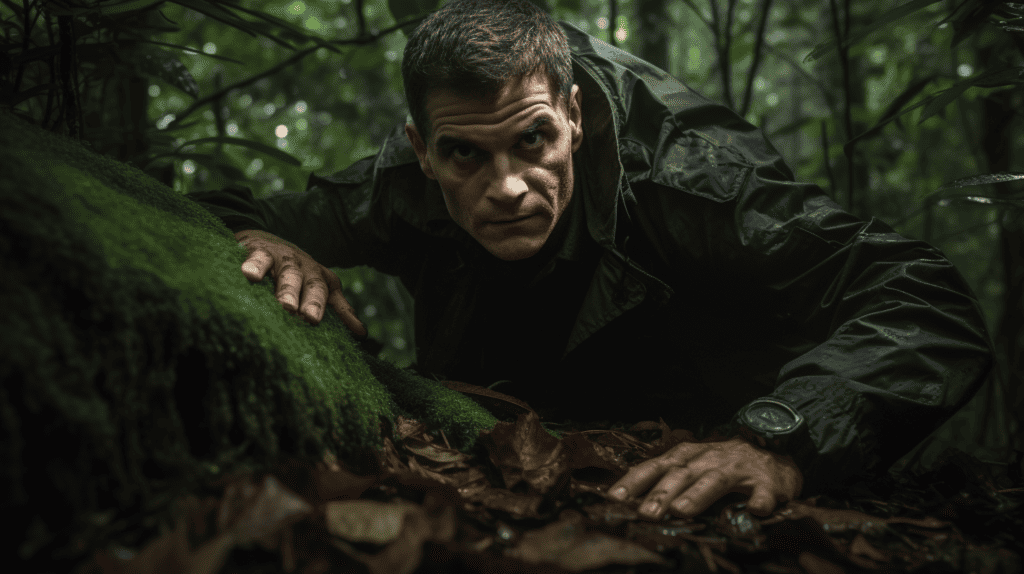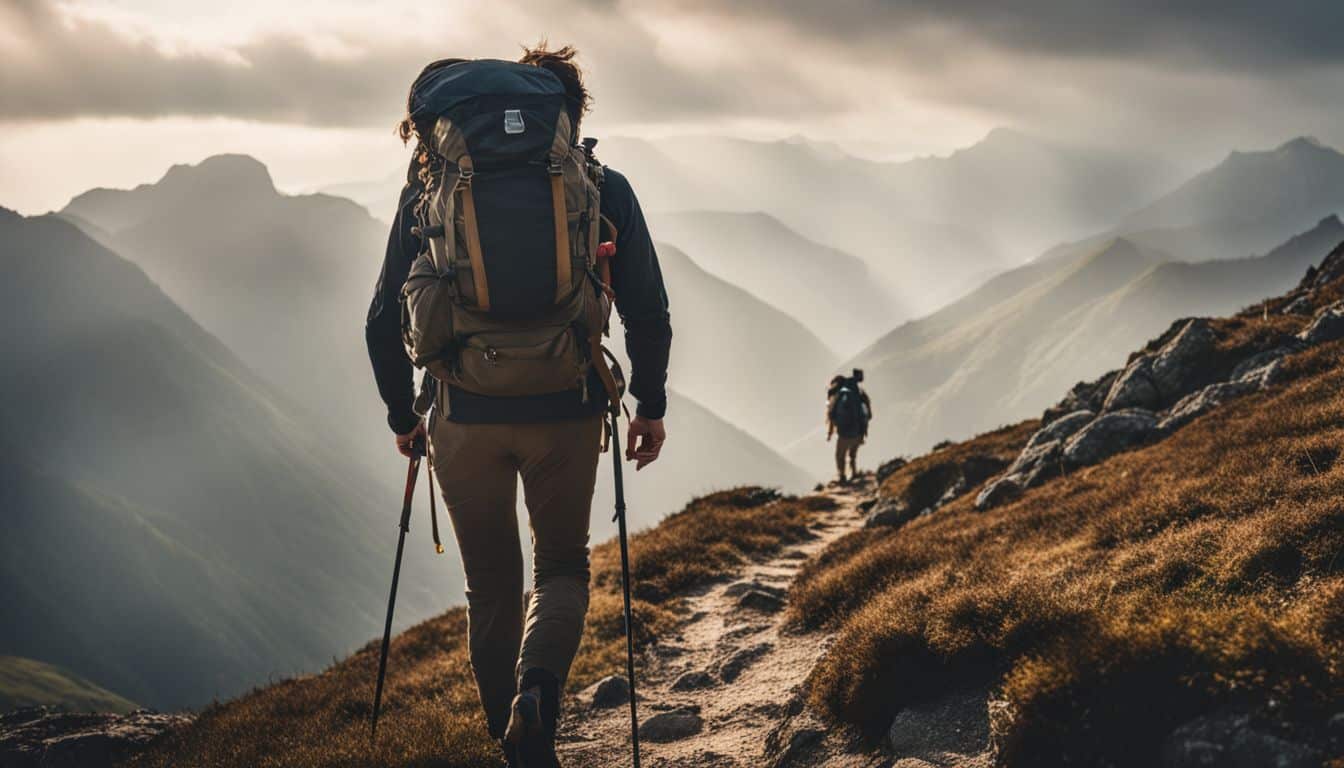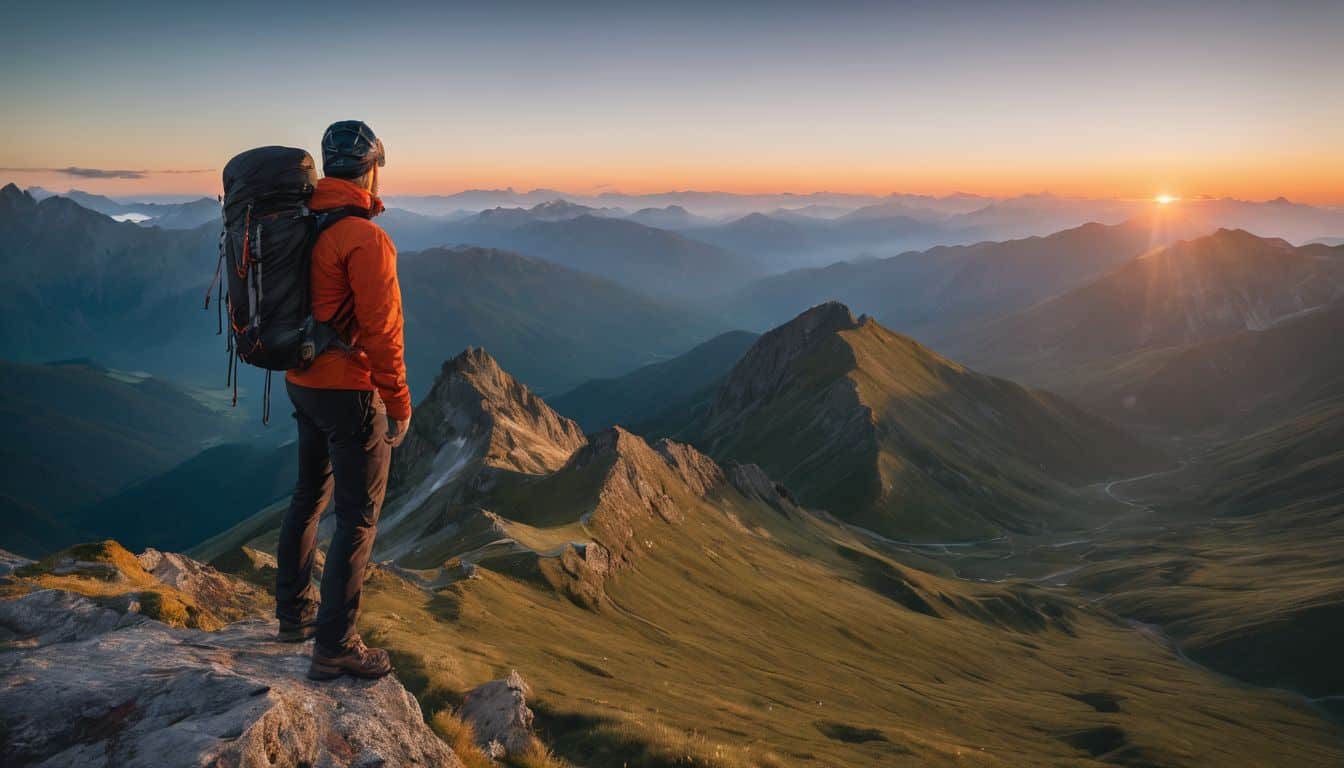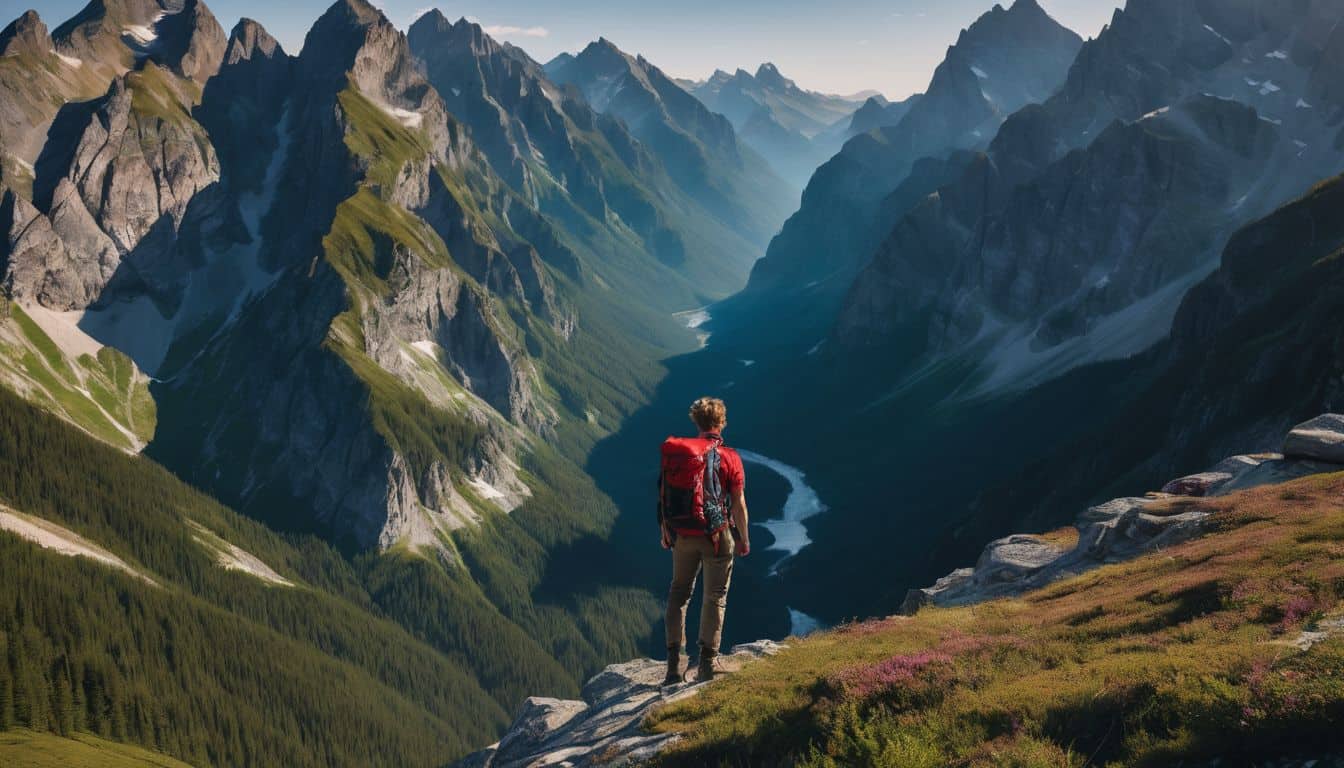If you’re anything like me, you’ve also found yourself knee-deep in sticky survival scenarios, tripping over mistakes that placed your well-being on the line. Trust me; I’ve had my share of skinned knees and bruised egos from stumbling through survival skills without a roadmap.
Luckily for all of us, with a dash of research and generous portions of personal experience mixed together, this blog will serve up valuable insights to help you swerve around those common survival missteps.
So let’s jump right in – buckle up for an adventure as we journey towards true mastery in navigating the wilderness!
Key Takeaways
- Going alone in the wilderness can be dangerous. It’s important to have proper preparation and knowledge before venturing out.
- Getting lost is a common survival mistake that can put your life at risk. Always plan your route and stay aware of your surroundings.
- Eating non – edible plants and mushrooms can be deadly. Know which ones are safe to eat and how to identify them correctly.
- Failure to light a fire can leave you vulnerable in survival situations. Learn different ways to start a fire for warmth, cooking, and visibility.
- Cutting corners and ignoring safety protocols can lead to severe consequences. Follow proper procedures to ensure your safety.
- Mistaking stubbornness for tenacity is dangerous in survival situations. Stay open – minded and consider different options for increased chances of survival.
- Ignoring dress code in the wilderness can have serious consequences such as hypothermia or injuries caused by inadequate clothing or footwear.
Common Survival Mistakes That Can Get You Killed
Going alone in the wilderness without proper preparation and knowledge can be a fatal mistake.
Going Alone
Going alone into the wild is a big risk. It might seem thrilling at first, but it can turn bad fast. Even if you know a lot about survival, accidents can happen. You could trip on a rock and hurt your leg badly.
Or you might get lost in deep woods without any way to call for help. Always take time to think about what could go wrong before taking this risk. Be ready for all the possible dangers that come with solo hiking trips in the wilderness.
Getting Lost
Getting lost can kill you. It’s a big mistake in survival situations. You may think you know where you’re going, but even experts have made navigation errors. I’ve seen this myself when people move without thinking or planning their route.
They end up getting deeper into danger instead of finding their way out.
In the wild, picking the wrong path is common too. It happens when we are not sure about our choices and just guess our next step. This can lead to bad results, like running into risky wildlife or harsh weather conditions.
Bad clothes choice also hurts us here. We must dress right for the place we go to be safe from cold or heat.
Eating Non-Edible Plants
I am careful about plants I eat. Poisonous ones can make us very sick or worse! Every year, almost 40 people get badly hurt by eating bad plants and mushrooms. Take poison hemlock for an example; it looks just like yarrow but don’t be fooled.
If you eat it, you could die! Even some plant parts can harm us if they are toxic. Picking the wrong food when we’re outside is dangerous and could cost our lives. That’s why it’s so important to know which plants are safe and how to tell them apart from harmful ones.
Failure to Light a Fire
One of the common survival mistakes that can be really dangerous is not being able to light a fire. It’s super important to know how to start a fire because it helps you stay warm, cook food, and gives you light in the dark.
If you don’t have a fire, you could end up getting hypothermia or not being able to see what you’re doing. So make sure to learn some fire-making skills and different ways to start a fire!

Cutting Corners
Cutting corners is a common survival mistake that can be deadly. It means compromising safety by ignoring protocols, skipping steps, or neglecting precautions. When we take unnecessary risks and disregard guidelines, we increase the chances of getting killed in survival situations.
By rushing through tasks and underestimating risks, we overlook potential hazards that could have severe consequences. So it’s important to avoid cutting corners and follow proper procedures to ensure our safety and survival.
Mistaking Stubbornness for Tenacity
Mistaking stubbornness for tenacity is a common mistake that can be dangerous in survival situations. It’s important to understand the difference between the two. While tenacity is about determination, perseverance, and resilience in difficult circumstances, stubbornness is more about refusing to change or adapt even when it’s not helpful.
In survival situations, being stubborn can lead to poor decision-making and put your life at risk. Instead of being overly attached to a single plan or idea, it’s crucial to assess the situation objectively and make decisions based on what will increase your chances of survival.
Having the ability to adapt and consider different options is key in these challenging situations.
Ignoring Dress Code
Ignoring dress code in the wilderness is a common survival mistake that can have serious consequences. When we venture into the wild, it’s important to dress appropriately for the environment and weather conditions.
Wearing the right outdoor clothing and gear can help protect us from cold, heat, rain, and other hazardous conditions. Additionally, proper attire can also provide us with camouflage and protection against biting insects or thorny vegetation.
By ignoring dress code, we increase our risk of hypothermia, sunburns, dehydration, or injuries caused by inadequate footwear or clothing. Remember: dressing appropriately is not just about looking good; it’s about staying safe in nature’s unpredictable elements.
Allowing Panic to Prevail
When faced with a survival situation, it’s important to avoid allowing panic to take over. Panic can cloud your judgment and prevent you from making rational decisions that could save your life.
It’s normal to feel scared or anxious in such situations, but it’s crucial to keep calm and focus on the task at hand. One helpful method is the “STOP” technique: Stop what you’re doing, Take a deep breath, Observe your surroundings, and Plan your next move.
Effective communication with others is also key during emergencies. Remember that panic can be managed through coping strategies like deep breathing, positive self-talk, and grounding techniques.
Trusting Weather Predictions
Trusting weather predictions can be a big mistake when it comes to survival. Weather forecasts may not always be accurate, and relying on them without taking other factors into consideration can put you in danger.
It’s important to remember that conditions can change quickly and unexpectedly, especially in the wilderness. Instead of solely trusting the weather forecast, it’s crucial to gather as much information as possible about the current and upcoming weather patterns.
This includes observing the sky for signs of changing weather, paying attention to local climate patterns, and utilizing tools such as barometers or weather radios if available. By being aware of your surroundings and gathering information from multiple sources, you’ll have a better understanding of what to expect and can make informed decisions to ensure your safety while out in nature.
Underestimating Risks
Underestimating risks in survival situations can have serious consequences. It’s easy to overlook dangers, especially if we think we know our surroundings well. But even during outdoor adventures close to home, emergencies can arise unexpectedly.
Neglecting important tasks like water purification or setting up camp properly can lead to health issues and discomfort. Maintaining a positive attitude is crucial, but it’s equally important to be aware of common survival mistakes and take steps to improve preparedness.
By avoiding potential risks and learning from the errors others have made, we can increase our chances of staying safe in challenging situations.
The Importance of a Positive Attitude

A positive attitude is really important when it comes to survival. It can make a big difference in how we handle tough situations. When we’re optimistic and have a good mindset, it helps us stay resilient and motivated.
Having gratitude for what we do have can also help us stay positive.
When we believe in ourselves and our abilities, it gives us the confidence to keep going even when things are tough. Positive thinking helps us see the possibilities instead of getting stuck in negative thoughts or panic.
Overall, having a positive attitude is not just about being happy all the time, but it’s about having emotional well-being and believing that we can overcome challenges. So remember to stay positive and keep your spirits up when you find yourself in a survival situation because it can truly make a difference.
First Aid Skills and Knowledge
As a survival enthusiast, one of the most important things you can do is to equip yourself with first aid skills and knowledge. Here are some essential skills to have:
- Administering first aid: Knowing how to address airway blockages, perform CPR, control bleeding, and manage other life-threatening situations can make all the difference in an emergency.
- Assessing the situation: When faced with a medical emergency, it’s crucial to evaluate the surroundings and assess potential risks before providing basic first aid.
- Understanding wilderness survival: In outdoor settings, being prepared for medical emergencies is a must. Wilderness first responder training can teach you how to handle injuries specific to these environments.
- Identifying hazards: By learning to conduct a hazard assessment, you’ll be able to recognize potential dangers that could worsen an injury or put yourself at risk.
Building Shelter for Protection
Building a shelter is crucial for survival in the wilderness. Here are some essential tips to help you build an effective shelter:
- Choose a suitable location: Look for a spot with natural protection, such as under trees or against a rock formation.
- Use available materials: Utilize what’s around you, like fallen branches, leaves, or even snow if applicable.
- Create a sturdy frame: Build a framework using larger branches or logs to provide stability and support for your structure.
- Cover the shelter: Layer smaller branches or foliage over the frame to create insulation from wind, rain, or snow.
- Seal gaps and openings: Use smaller branches or leaves to close any holes, ensuring that your shelter is secure and keeps out drafts.
- Size matters: Avoid making your shelter too large, as it will require more materials and become harder to insulate properly.
- Effort and time: Building a shelter takes time and effort, so be prepared to invest both in ensuring its effectiveness.
- Adequate insulation: Make sure your shelter provides enough insulation to keep you warm during cold nights.
- Proper ventilation: While insulation is important, ensure there’s also enough airflow to prevent condensation buildup inside.
Securing a Clean Water Source
Securing a clean water source is crucial for survival in challenging environments. Here are some important steps to follow:
- Find a source of drinkable water, such as streams, rivers, and lakes.
- Always remember to boil the water before drinking it to eliminate any harmful substances.
- Use a water filtration system or water purification tablets if available.
- Avoid drinking from stagnant or dirty sources, as they may contain harmful bacteria or parasites.
- If you’re unsure about the safety of the water, consider collecting rainwater or melting snow as alternatives.
- Carry a reusable water bottle or container to store and transport water throughout your journey.
Ensuring Warmth in Survival Situations
In survival situations, keeping warm is crucial for your safety. Here are 7 ways to ensure warmth:
- Dress in layers: Wearing multiple layers of clothing helps trap heat and insulate your body.
- Use a fire: Starting a fire provides warmth and can also be used for cooking and signaling for help.
- Find or build shelter: A well-insulated shelter protects you from wind, rain, and cold temperatures.
- Use natural materials: Insulating your shelter with leaves, grass, or pine needles can enhance its warmth.
- Keep your head covered: Heat escapes through the head, so wearing a hat or scarf helps retain warmth.
- Stay dry: Moisture makes you lose body heat faster, so keep your clothes and sleeping area dry.
- Make use of hot water bottles: Filling a bottle with warm water and placing it in your sleeping bag provides additional warmth.
Signaling for Help
Signaling for help is a crucial skill in survival situations. When you’re lost or in an emergency, attracting attention can increase your chances of being rescued sooner. Here are some important ways to signal for help:
- Use bright colored garments: Wearing brightly colored clothing can make it easier for rescuers to spot you. Choose colors that stand out in the wilderness, like orange or fluorescent green.
- Create reflective signals: Reflective materials, such as a mirror or aluminum foil, can be used to create signals that catch the sunlight and attract attention. Aim the reflection towards potential search areas.
- Make noise: Sound can carry far in open spaces. Use a whistle, shout loudly, or bang on objects to create noise that might alert others to your presence.
- Build a signal fire: Fire provides both warmth and visibility. Place green foliage or wet materials on top of the fire to create thick smoke that can be seen from afar.
- Use visual signals: If you have access to brightly colored cloth or plastic, tie it to a tree or pole where it will be visible from a distance. You can also use rocks or branches to create large arrow shapes pointing towards your location.
- Signal with an SOS sign: The internationally recognized SOS distress signal consists of three short signals, followed by three long ones, and then three more short ones (· · · – – – · · ·). Learn how to tap out this pattern using any available tool like a flashlight or rocks.
Understanding and Avoiding Common Survival Mistakes
Understanding and avoiding common survival mistakes is crucial for anyone venturing into the wilderness. It’s important to recognize that going alone can be a dangerous choice, as it limits your ability to seek help or support when needed.
Getting lost is another common mistake, so always make sure you have a map and compass, and take the time to familiarize yourself with the area beforehand.
Eating non-edible plants is a major error that could result in illness or worse. Always do your research before consuming any wild plants or fungi. Failure to light a fire can also leave you vulnerable in cold weather situations, so ensure you have the necessary tools and knowledge to start one.
Cutting corners and neglecting vital survival keys are both mistakes that should be avoided. Taking shortcuts may seem tempting, but it can lead to dire consequences. Mistaking stubbornness for tenacity is another trap many fall into; knowing when to ask for help or change your plans can save your life.
Ignoring dress code in harsh weather conditions can increase the risk of hypothermia or heatstroke. Dress appropriately by layering clothing and wearing proper footwear based on the climate you’re facing.
Panic can cloud judgment and hinder decision-making abilities, so learning techniques to stay calm under pressure is essential.
Lastly, trusting weather predictions too blindly and underestimating risks are two more errors worth mentioning here. Weather forecasts may not always be accurate, so remain vigilant regardless of what they predict.
Failing to assess risks properly increases the likelihood of encountering dangerous situations unexpectedly.
To avoid these common survival mistakes requires education, preparation, and keeping an open mind about potential challenges ahead.
Finding and Procuring Food
Finding and procuring food is crucial in survival situations. Here are 7 ways I dominate in finding and procuring food:
- Foraging: Look for edible vegetation, such as berries, nuts, and roots. Be cautious of poisonous plants and learn to identify them.
- Hunting: Develop your hunting skills to catch animals for meat. This can include trapping or using tools like spears or bows and arrows.
- Gathering: Collect insects, grubs, or small creatures that can be eaten for sustenance. They may not be appetizing, but they provide valuable protein.
- Survival skills: Learn how to fish and set up traps for catching fish or other aquatic creatures. This will help provide a steady source of food.
- Edible plants: Familiarize yourself with edible wild plants in your area, such as dandelions, cattails, or nettles. They can supplement your diet.
- Poisonous plants: Avoid consuming any plants that you are unsure of. Mistakenly eating poisonous plants can have serious consequences.
- Natural resources: Make use of natural resources like rivers, lakes, or streams to find fish or other aquatic life for food.
Conclusion on Avoiding Common Survival Mistakes
In conclusion, by being aware of common survival mistakes and taking steps to avoid them, you can greatly increase your chances of dominating in wilderness situations. Remember to never go alone, stay calm and focused, seek shelter and clean water sources, know basic first aid skills, and find ways to signal for help if needed.
With the right knowledge and preparation, you can overcome obstacles and conquer any challenges that come your way. Keep these tips in mind to ensure survival success in the great outdoors.
FAQs on Avoiding Common Survival Mistakes
1. What are some common survival mistakes to avoid?
Some common survival mistakes to avoid include not having a plan, underestimating the importance of water and food, neglecting first aid knowledge, and lacking essential tools like a map or compass.
2. How can I dominate in survival situations?
To dominate in survival situations, it’s important to stay calm and focused, prioritize your basic needs (such as shelter, water, food), adapt to the environment, learn essential skills like fire-making and navigation, and be prepared with necessary supplies.
3. What should I do if I get lost in the wilderness?
If you get lost in the wilderness, it’s important to stop moving and try to retrace your steps. If that doesn’t work or if it gets dark/stormy, find shelter for protection from the elements while you wait for help or devise a plan.
4. How can I ensure my safety during outdoor adventures?
To ensure your safety during outdoor adventures, make sure to research beforehand about potential dangers or hazards in the area you’re visiting; always carry essential items such as a map/compass/gps device; let someone know about your plans; dress appropriately for weather conditions; bring enough food/water/supplies for emergencies.
5. Should I rely on technology when surviving outdoors?
While technology can be helpful during outdoor activities (e.g., GPS devices), it is crucial not to solely depend on it as technical failures or lack of signals may occur. Basic survival skills (e.g., orienteering) and physical tools should also be acquired and utilized as backup plans when needed.





Leave a Reply